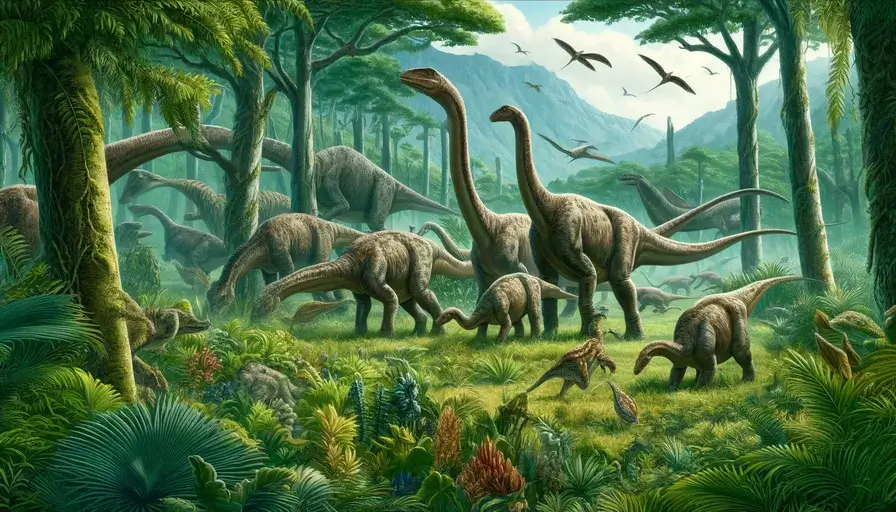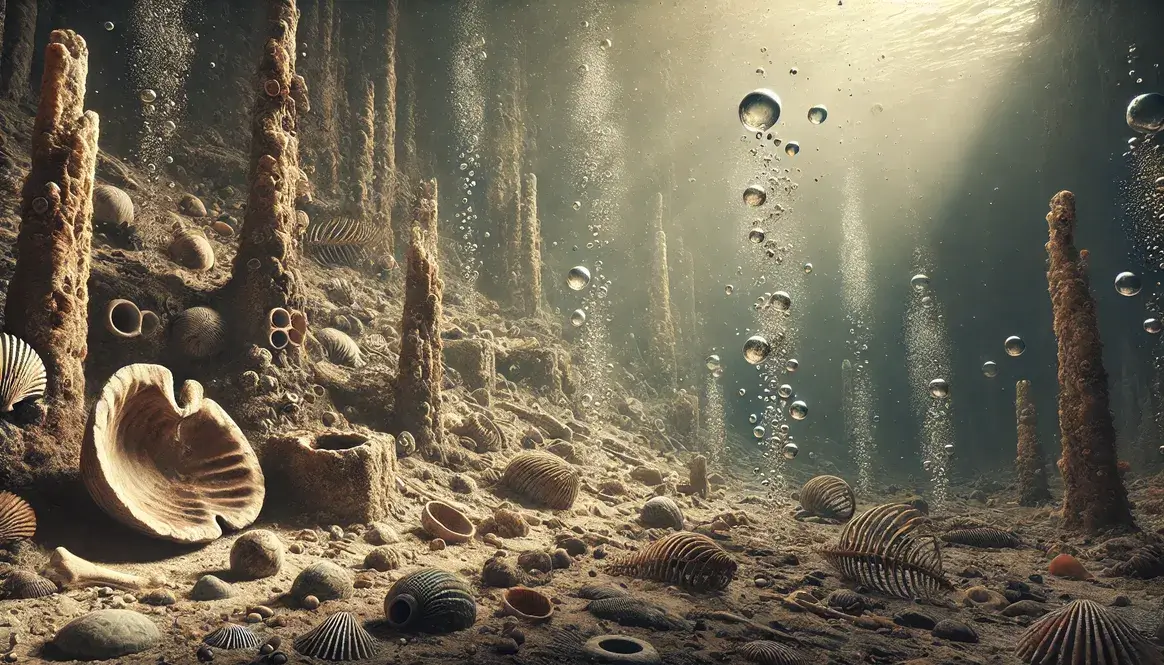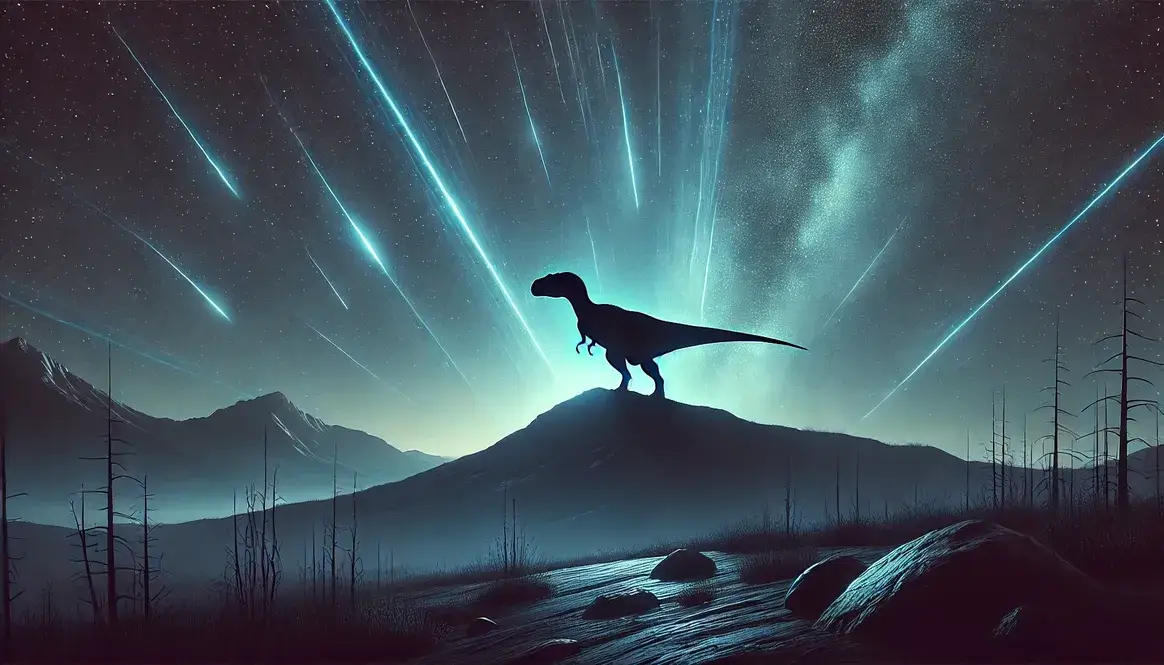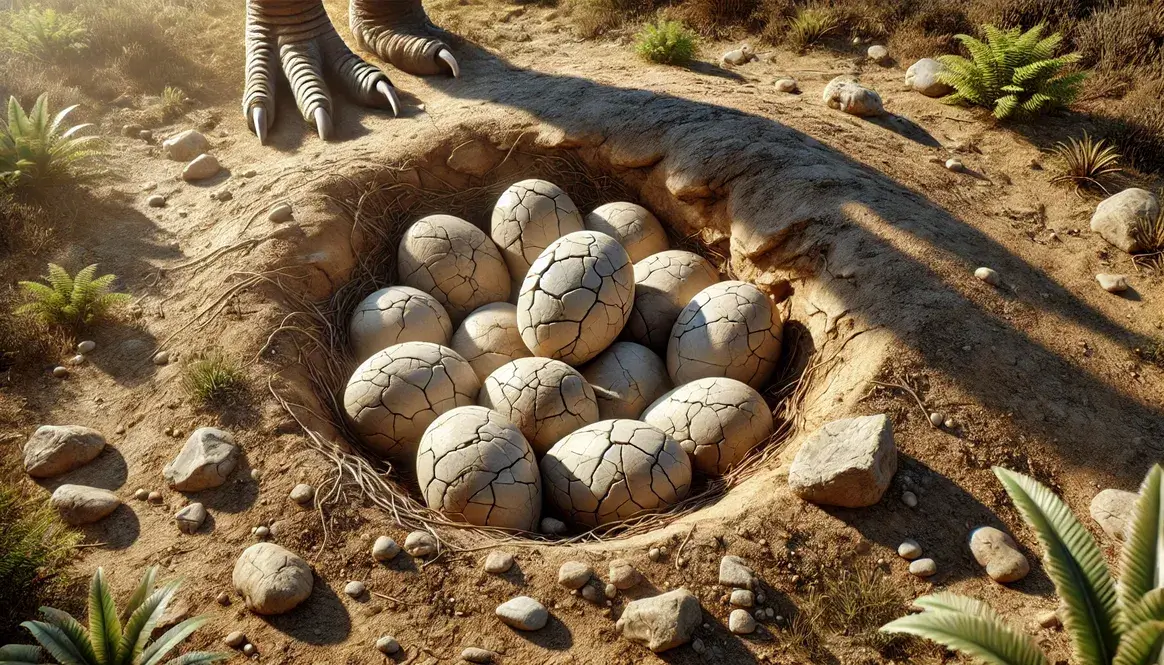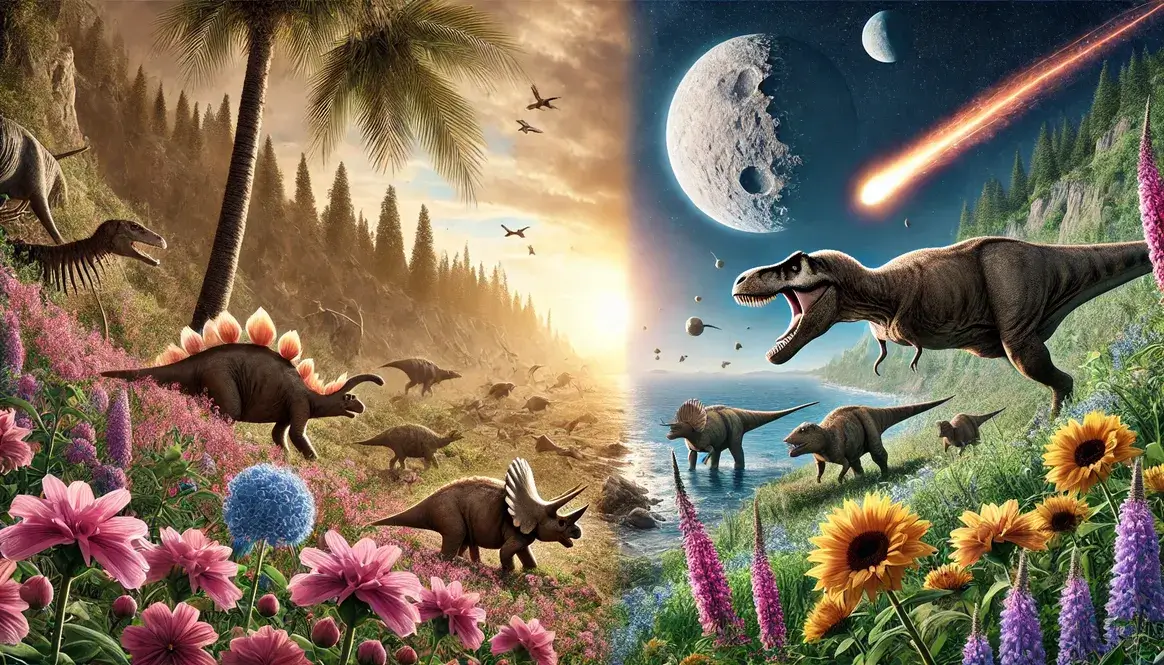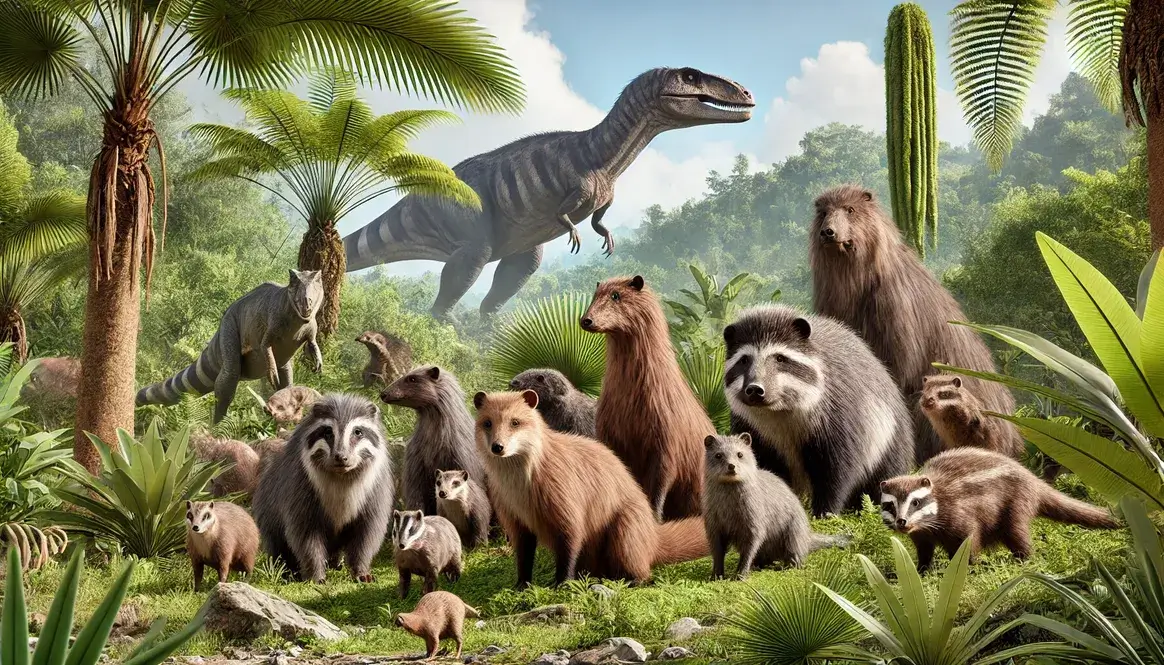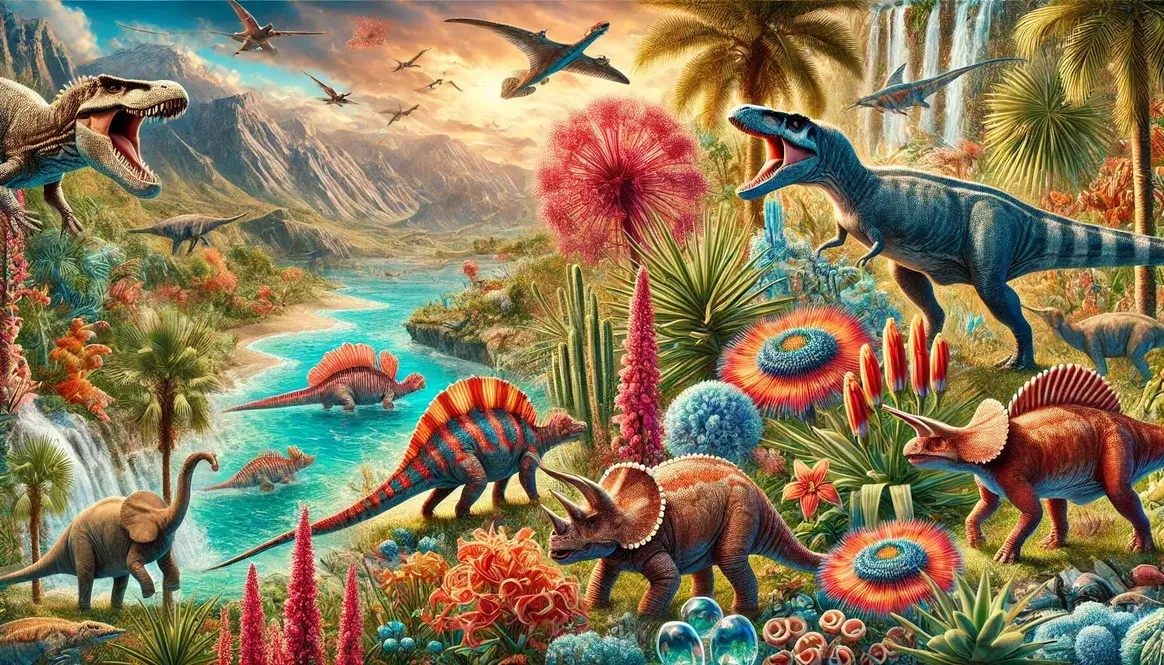Picture this: you’re walking through a lush, green forest during the Age of Dinosaurs. Suddenly, you spot a herd of strange-looking creatures munching on the vegetation. They walk on two legs like giant geese, but they have long, flattened snouts like ducks.
These bizarre but fascinating animals are ornithopod dinosaurs from the Cretaceous period, around 145 to 66 million years ago.
Ornithopods were one of the most successful and diverse groups of plant-eating dinosaurs. They thrived in the Cretaceous, a time when:
From the famous duck-billed hadrosaurs to the lesser-known hypsilophodontids, Cretaceous ornithopods came in many shapes and sizes. Let’s dive in and learn more about these amazing prehistoric creatures!
Ornithopod Overview
So what exactly is an ornithopod? Here are some of their key features:
- Unique skull shape with a beak-like snout for cropping vegetation
- Specialized teeth for effectively chewing tough plant matter
- Bipedal stance – they walked on two legs
- Stiff tail that provided balance while moving
- Hoof-like claws on their feet
Ornithopods differed from other major dinosaur groups like:
| Dinosaur Group | Key Difference |
|---|---|
| Long-necked sauropods | Ornithopods were bipedal and had chewing teeth |
| Armored ankylosaurs | Ornithopods lacked extensive body armor |
| Dome-headed pachycephalosaurs | Ornithopods had duck-like beaks instead of thick skull domes |
While all were plant-eaters, ornithopods had a very efficient chewing ability with teeth that were continuously replaced – perfect for processing the tough vegetation of the Cretaceous. This, along with their bipedal mobility, allowed them to thrive in a variety of habitats.

Duck-Billed Dinosaurs
When most people think of ornithopods, duck-billed dinosaurs or hadrosaurs probably come to mind first. And for good reason – these Cretaceous herbivores were one of the most common and widespread dinosaur groups.
Hadrosaurs are known for their:
- Broad, flattened snouts that look remarkably like the bill of a duck
- Hundreds of close-packed teeth
- Efficient grazing ability, able to feed on low-growing vegetation
Many hadrosaurs also had elaborate bony crests on their heads. These crests came in all sorts of shapes and sizes – from the tubular crest of Parasaurolophus to the spiky frill of Lambeosaurus. Scientists think these crests were likely used for:
- Display
- Communication
- Possibly enhancing their sense of smell
There were two main subgroups of hadrosaurs:
- Lambeosaurines (like Parasaurolophus and Corythosaurus) which had hollow head crests
- Saurolophines (like Edmontosaurus and Saurolophus) which had solid crests or no crests
Some of the most famous hadrosaur species include:
Parasaurolophus walkeri
This 10 meter long hadrosaur is known for its long, tube-like crest that might have produced low, resonant sounds.
[Parasaurolophus walkeri image]
Edmontosaurus regalis
One of the largest hadrosaurs at 12 meters long, Edmontosaurus had a broad, toothless beak and no head crest.
[Edmontosaurus regalis image]
Lambeosaurus lambei
This flamboyant dinosaur sported a tall, hatchet-shaped crest. Fossils of Lambeosaurus are common in North America.
[Lambeosaurus lambei image]
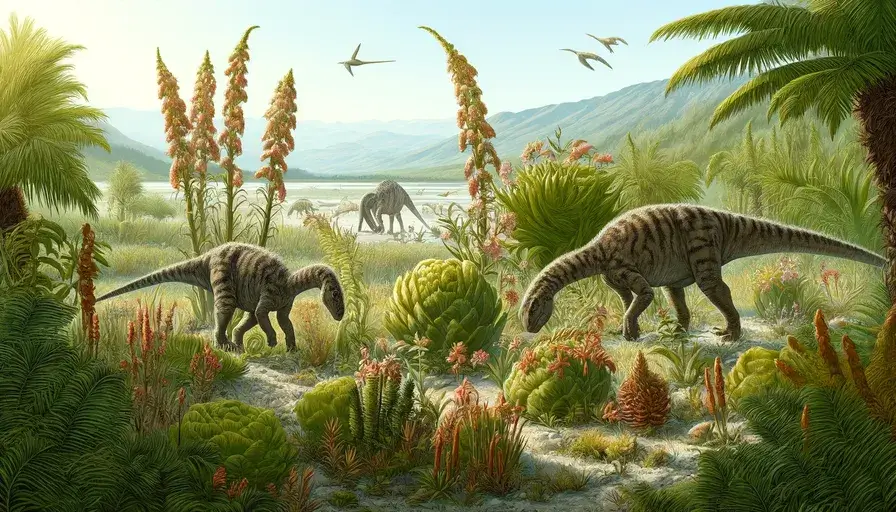
Other Cretaceous Ornithopods
While hadrosaurs may get much of the attention, they were far from the only ornithopods roaming the Cretaceous landscape. Here are a few other notable ornithopods from this time:
Iguanodon bernissartensis
- One of the first dinosaurs to be named back in 1825
- Large ornithopod, around 10 meters long
- Had a long snout, thumb spikes, and a bulky body
- Lived in the Early Cretaceous of Europe
[Iguanodon bernissartensis image]
Hypsilophodon foxii
- Small, agile dinosaur about 2 meters long
- Had a short head, slender body, and long hind legs for running
- Lived in the Early Cretaceous of Europe
[Hypsilophodon foxii image]
Tenontosaurus tilletti
- Medium-sized ornithopod, around 6-7 meters long
- Had a long, low skull and stiff tail
- Known from many specimens in North America
- Some fossils have bite marks from Deinonychus, showing these ornithopods were hunted by dromaeosaurid “raptors”
[Tenontosaurus tilletti image showing bite marks]
These are just a few examples of the diversity of Cretaceous ornithopods. From small, fleet-footed hypsilophodontids to massive, crested hadrosaurs, ornithopods came in an impressive array of forms, each adapted to their own unique niche.
In my analysis, this group’s remarkable adaptability enabled ornithopods to flourish and diversify through the Cretaceous period like few other dinosaur groups:
- Specialized jaws for chewing tough vegetation
- Efficient bipedal stance for maneuvering in different environments
Their remains are among the most commonly found dinosaur fossils, a testament to their evolutionary success.
Paleobiology and Behavior
So how did these fascinating creatures actually live? Paleontologists have pieced together quite a bit about the behavior and biology of Cretaceous ornithopods.
Diet
As we’ve seen, ornithopods were well-adapted for eating tough vegetation. Their specialized teeth and jaws allowed them to chew efficiently, and their duck-like beaks were perfect for cropping low-growing plants.
Hadrosaurs, in particular, were likely grazers, feeding on abundant vegetation like:
- Ferns
- Horsetails
- Early flowering plants
Smaller ornithopods like hypsilophodontids may have been more selective browsers, nibbling on softer plant parts.
Herding Behavior
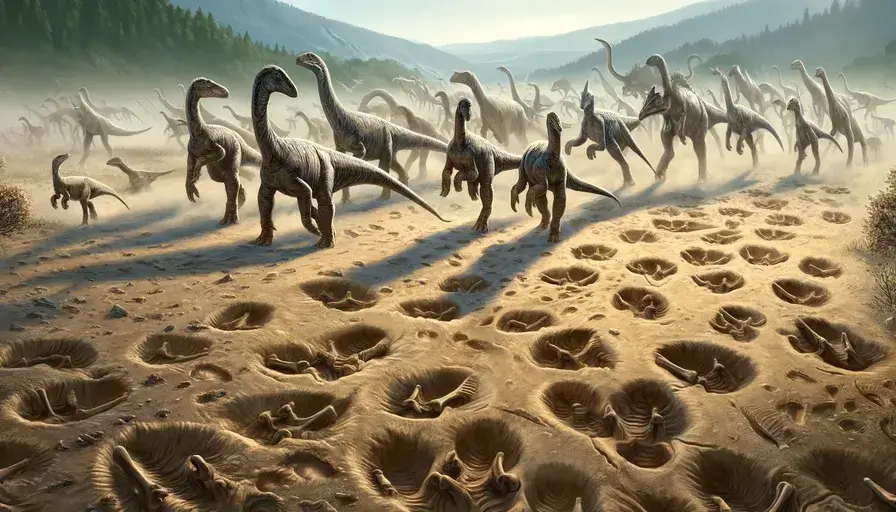
Many ornithopods are thought to have lived in herds. Evidence for this comes from:
- Bonebeds containing numerous individuals of the same species
- Trackways showing multiple animals moving together
Herding would have provided safety in numbers and allowed for better detection of predators. Imagine a flock of duck-billed dinosaurs honking to each other as they moved through the ancient forest!
Growth and Reproduction

Ornithopods started out small – hatchlings of even the largest species were less than a meter long. They grew rapidly in their early years and more slowly after reaching sexual maturity.
We have good evidence that ornithopods reproduced like most dinosaurs – by laying eggs. Fossilized eggs and nests have been found for several ornithopod species. For example:
- Maiasaura nests show that babies stayed in the nest and were fed by parents, like modern birds
- A Hypacrosaurus nest contained the remains of a tiny embryo, only about 5 cm long
Nesting sites often contain multiple nests in one area, suggesting that ornithopods gathered together to lay eggs communally.
While much of ornithopod behavior remains shrouded in mystery, the available evidence paints a picture of social, herding animals that grew rapidly and cared for their young. It’s fun to imagine them calling to each other, tending nests, and foraging together across the Cretaceous landscape.
Evolutionary History
Ornithopods were one of the major success stories of the Cretaceous period. But their story starts earlier, in the Jurassic. Here’s a quick trip through ornithopod evolution:
| Time Period | Key Events |
|---|---|
| Late Jurassic (163-145 million years ago) | First small, primitive ornithopods like Drinker appear |
| Early Cretaceous (145-100 million years ago) | Ornithopods diversify into many lineages Larger, more derived forms like Iguanodon evolve |
| Mid Cretaceous (100-66 million years ago) | Hadrosaurs appear and spread across the globe Many ornithopod lineages go extinct |
| End Cretaceous (66 million years ago) | Asteroid impact and mass extinction All remaining ornithopods die out |
[Timeline graphic showing ornithopod evolution]
The ornithopod story is one of a humble beginning, rapid diversification, and eventual extinction. Despite their demise, they remain one of the most diverse and successful dinosaur groups of all time.
Fun Facts
- Some hadrosaurs like Edmontosaurus could grow to over 12 meters long and weigh as much as 4 tons – that’s as heavy as an African elephant!
- Iguanodon was one of the first dinosaurs ever discovered. Its thumb spike was originally mistaken for a horn, and placed on its nose in early reconstructions.
- The hollow crest of Parasaurolophus may have acted as a resonating chamber, allowing it to make low, haunting calls that could be heard for miles.
- Hadrosaurs had up to 1,400 teeth neatly stacked in columns. They were like a self-sharpening multi-tool for cutting through vegetation.
- A mummified specimen of Edmontosaurus named ‘Dakota’ even preserves some skin impressions, giving us a rare glimpse of what its scaly hide looked like.
Conclusion
The Cretaceous period was truly the heyday of the ornithopods. These remarkable dinosaurs flourished thanks to their adaptations for chewing tough vegetation and their efficient, bipedal locomotion.
From the tiny, swift hypsilophodontids to the monstrous, crested hadrosaurs, Cretaceous ornithopods came in a dazzling array of forms. They filled the landscape, living in herds, caring for their young, and evolving into one of the most successful dinosaur groups.
Though their time was cut short by the end-Cretaceous extinction, their legacy lives on in the wealth of fossils they left behind. Every new discovery helps us piece together the lives of these fascinating creatures.
So the next time you see a duck dabbling in a pond or a goose waddling across the grass, spare a thought for their distant, long-lost cousins – the extraordinary, the bizarre, the unforgettable ornithopods of the Cretaceous.

